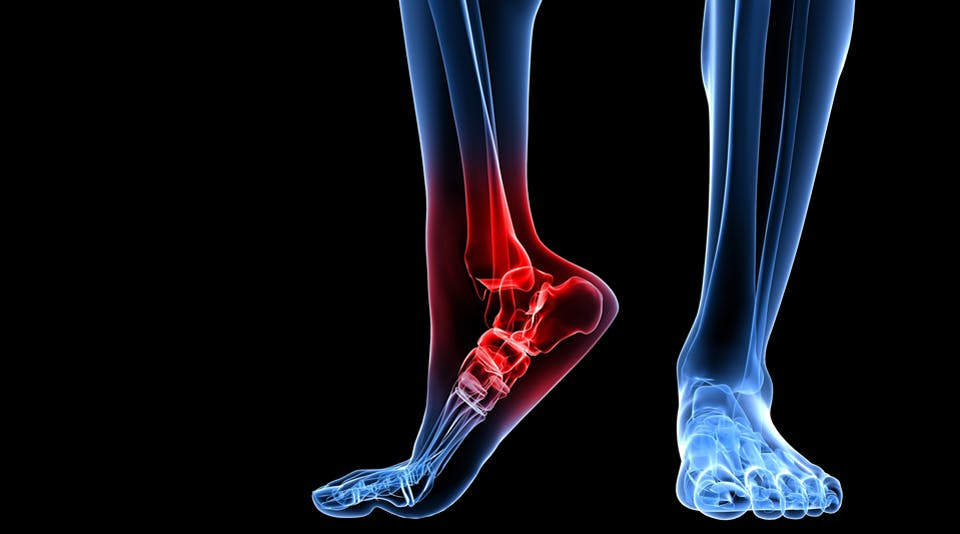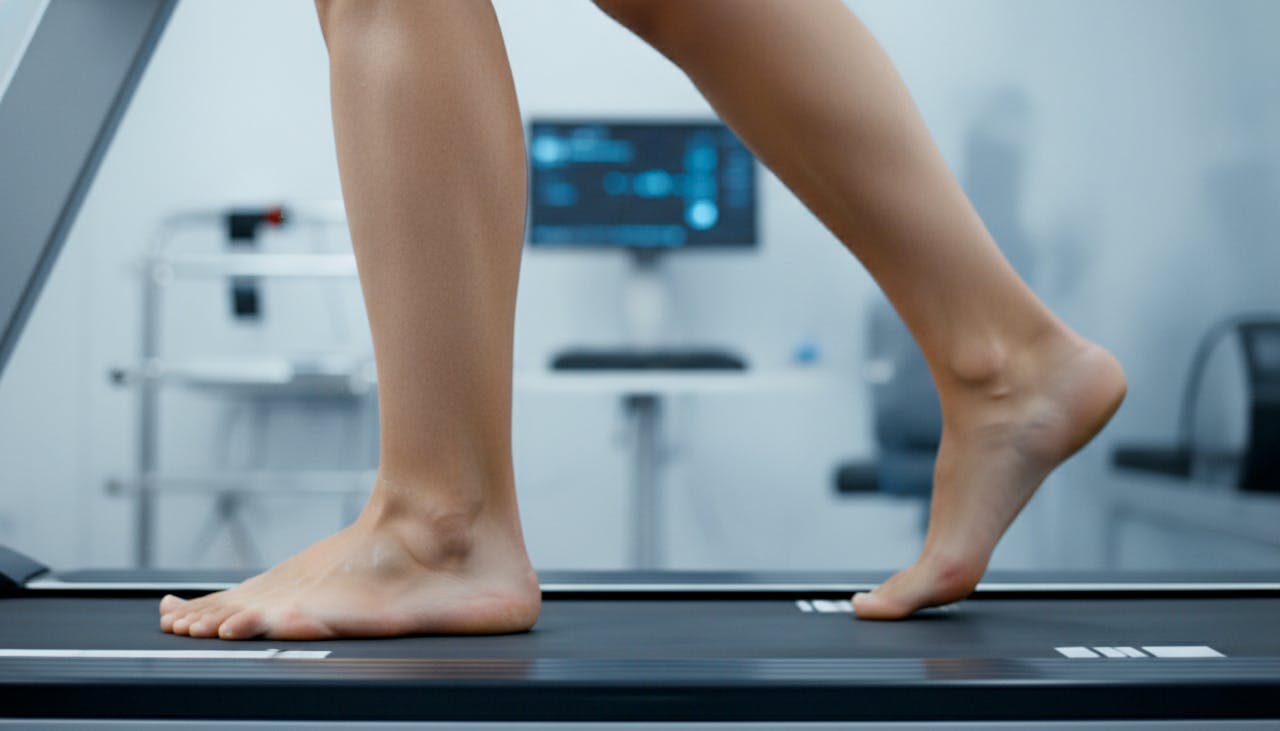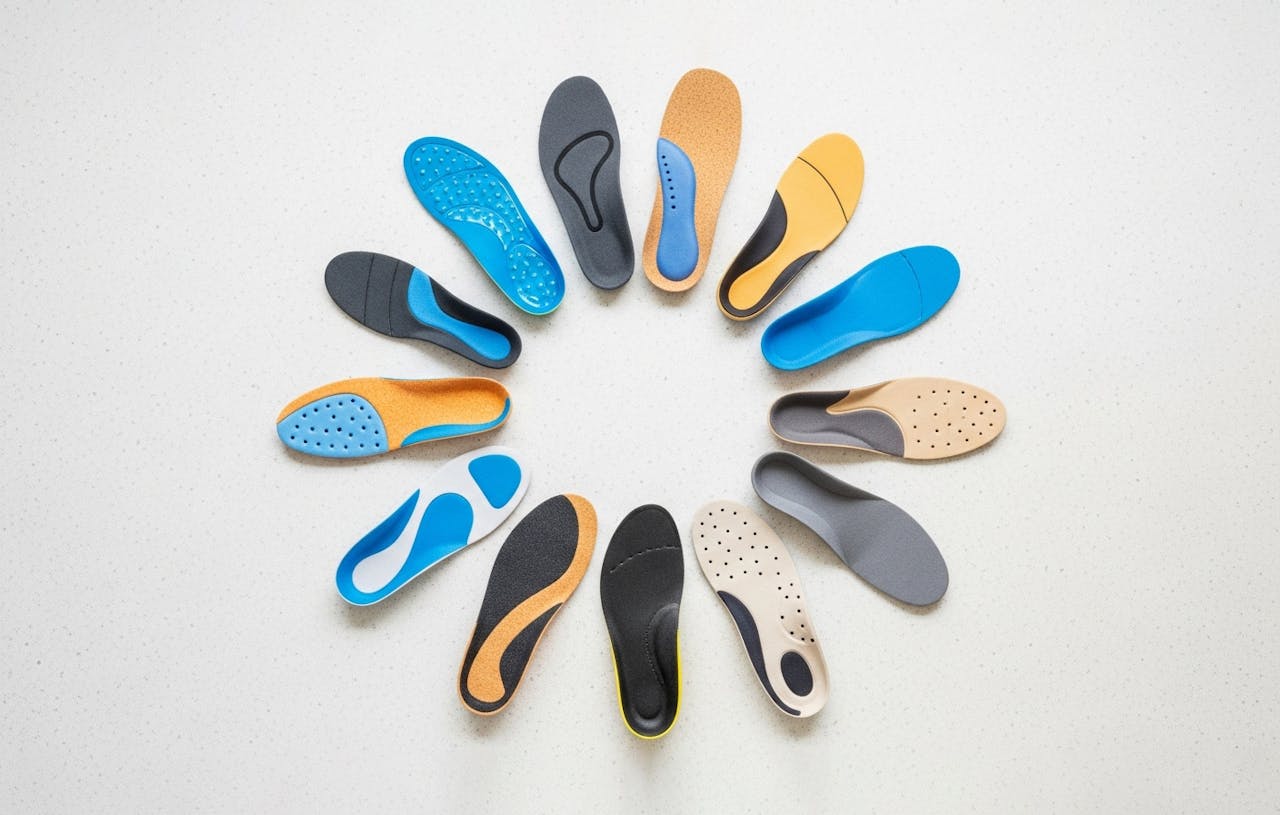
Tarsal Coalition
Tarsal coalition is an abnormal bridge of tissue connecting two bones in the back of the foot that should normally be separate, often resulting in a rigid, painful flat foot.
Overview
What is it?
The tarsal bones are a group of seven bones that make up the heel and midfoot. In a tarsal coalition, two of these bones grow connected to each other. This connection (coalition) can be made of bone, cartilage, or tough fibrous tissue. Because these bones are normally meant to move past one another to allow your foot to adapt to uneven ground, locking them together leads to severe stiffness and stress on surrounding joints.
How common is it?
It is estimated to affect approximately 1% of the population. While present from birth, it frequently goes unnoticed until adolescence (ages 10–16). This is because the connection often starts as flexible cartilage, only becoming a rigid, painful problem when that cartilage turns to solid bone during regular growth spurts.

Symptoms & Causes
What are the symptoms?
The primary symptoms are pain, typically on the outside of the foot or just below the ankle, and a noticeable lack of flexibility in the foot.
What does it feel like?
Patients often describe a deep, aching pain that gets worse with activity, especially on uneven surfaces where the foot tries to twist but cannot. You might notice your foot is very flat and stiff. A unique symptom is "peroneal spasm," where the muscles on the outside of your lower leg go into a tight, painful spasm in an attempt to stop the painful joint from moving.
What causes it?
In the vast majority of cases, it is a congenital condition, meaning you are born with it due to a slight error in how the bones divided during foetal development. It is often an inherited trait.
Some health conditions can include:
- Less commonly, it can be acquired later in life due to severe arthritis, infection, or major trauma to the area.

How is it Diagnosed?
At Foot Factor, distinguishing a tarsal coalition from a standard "flat foot" is crucial, as the treatments are very different.
What tests are used to diagnose it?
- Physical Examination: We look for a "rigid flat foot." unlike a typical flat foot that develops an arch when you stand on tiptoes, a foot with a tarsal coalition remains completely flat and stiff in all positions. We will also test the range of motion of your subtalar joint (the joint below the ankle), which is usually severely restricted.
- Imaging: Standard X-rays can often show bony coalitions. However, if the connection is made of cartilage or fibrous tissue, we may refer you for a CT or MRI scan to visualise the bridge clearly.
Foot Factor provides Expert Podiatry Treatment Tailored to You.
At Foot Factor, our podiatrists specialise in diagnosing and treating foot pain with precision and expertise. With advanced gait analysis, bespoke orthotics, and sports-focused podiatry care, we don’t just identify the problem—we provide a targeted solution to get you back to moving pain-free. Book a consultation today and take the first step toward lasting relief.

How is it Treated?
The goal of non-surgical treatment is to relieve pain by reducing movement in the affected painful joint.
- Specialist Orthotics: Unlike orthotics for standard flat feet designed to improve motion, orthotics for tarsal coalition are often designed to restrict it. We can create rigid, supportive custom orthotics that cradle the heel and arch, effectively acting like a splint inside your shoe to stop the painful bones from trying to move against each other.
- Activity Modification & Footwear: Advising on stiff-soled boots or shoes that do some of the work for your foot, reducing the demand on the rigid joints.
- Immobilisation: During severe flare-ups, a short period in a walker boot may be necessary to completely rest the area and calm inflammation.
- Surgical Referral: If conservative measures fail to control the pain, we may refer you to an orthopaedic surgeon. Surgery can involve either removing the abnormal bridge (resection) to restore motion or permanently fusing the joints together to eliminate pain.
Our Bespoke Orthotics give you the Right Support for Long-Term Relief.
At Foot Factor, our podiatrists specialise in diagnosing and treating foot pain with precision and expertise. With advanced gait analysis, bespoke orthotics, and sports-focused podiatry care, we don’t just identify the problem—we provide a targeted solution to get you back to moving pain-free. Book a consultation today and take the first step toward lasting relief.
Related Articles
Find expert tips, advice, and insights to support your foot health and active lifestyle.


